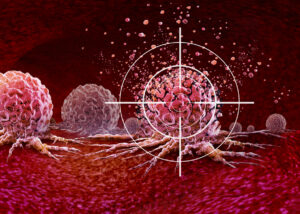What if your doctor could prescribe specialized massages for your medical needs? Yeah, I wouldn’t hesitate either. In the past I viewed getting a massage as a form of pampering and a waste of money. I felt it was something someone would do on a luxurious vacation, but not for health wellness. There are different types of massage therapies for different needs. The type of massage I’m interested in pertains to the immune physiology of the body. I decided to dive into this subject to see if there were potential benefits that go beyond relaxation.
I recall being in a psychology class and being given a questionnaire on stressful events. It asked me to select what type of negative experiences occurred in the past two years, from the passing of a loved one to a traffic ticket. Each experience had a number attached to it that was supposed to be calculated for an outlook of your stress level. At the time I didn’t have any recent hardships and couldn’t absorb the truth behind this questionnaire. Several years later I experienced heavy emotional pains and frustrations. These events can take a toll mentally which can translate into physical trauma on tissues and organ systems over time.
This present investigation led me to analyze the lymphatic system as a reason for therapeutic benefit. A simple definition of the lymphatic system can be defined as a recycling center that interacts with certain organs and body fluid. It has a crucial role in maintaining a balanced immune system and protects us from infectious organisms. There is a great deal of waste in our bodies from cells and bacteria. This requires an organized cleaning process to allow for normal function. The main parts of the lymphatic system include the spleen, bone marrow, thymus, lymph nodes, and mucosa associated lymphoid tissue. All immune cells are created in bone marrow, the thymus along with lymph nodes act as military bases for immune cells. These parts of the body have complex duties that cannot be overlooked when considering the immune system.
But how does the lymphatic system have anything to do with getting a professional massage? As previously mentioned, there are different types and techniques of therapeutic massages. Some methods are light pressure while others are deep tissue and some use heat therapy as well. There are key points in the body where lymph fluid travels and can sometimes become stagnant in areas where it shouldn’t be. The technique used to address and correct this problem is called lymphatic drainage. A trained massage therapist will know how to apply pressure on specific areas using a motion that releases lymph fluid buildup. I believe many people may need this therapy and don’t know it. This is because the causes of this disruption in the immune system can be the result of chronic stress, autoimmune conditions, and even certain prescriptions.
The symptoms of an inflamed poor functioning lymphatic system can include fatigue, bloating, brain fog, and headaches. These symptoms can easily be overlooked as an “off day.” Most massage therapies including lymphatic involve the release of toxins that have been stored in the body. An increase in fluid consumption is essential to excrete them properly. There are several other ways to positively influence the lymphatic system including regular exercise, diaphragmatic breathing, and a good diet. Allowing the body to detoxify and maintain normal immune function will always be of benefit. This information was shared to give emphasis on the connection between the immune system and specialized massage therapy.
Another area of interest that is related to this topic has to do with fascia. This is a tissue that is wrapped around muscles and is located throughout the body. Similar to lymphatic drainage, there is a technique for fascia called myofascial release. This massage focuses on trigger points in the body where tight muscles have locked up causing physical and mental discomfort. Tight and inflamed fascia can result in muscle knots and lack of mobility. Myofascial release is often used for individuals with chronic pain that require manual adjustment of fascia tissue. I had somewhat of a comparable experience from a painful immobilizing hip tendonitis injury. Physical therapy was needed to resolve this problem through a program of stretching and strength building. The acupressure technique my physical therapist used to release tight muscles and tendons caught my attention. I recall how painful it was, but afterward my leg had full range of motion. This first step of the healing process allowed me to continue and finish the treatment plan.
This was a short introduction to the possible benefits of massage therapy for individuals with chronic pain and certain conditions. Do I personally believe this will resolve autoimmune conditions? Probably not, but I do think it’s a piece of a large puzzle that balances wellness in a person’s life. I view lymphatic massages as a type of maintenance that many of us need on occasion for the daily stressors of life. Stress and injuries can get stored in the body and sometimes need a manual release to aid in the healing process. Considering the positive impact it can have, I believe medical insurances should cover this therapy for pain, healthy immunity, and stress. For everyone who deals with these adversities, remember to treat yourself from time to time because you deserve it!





